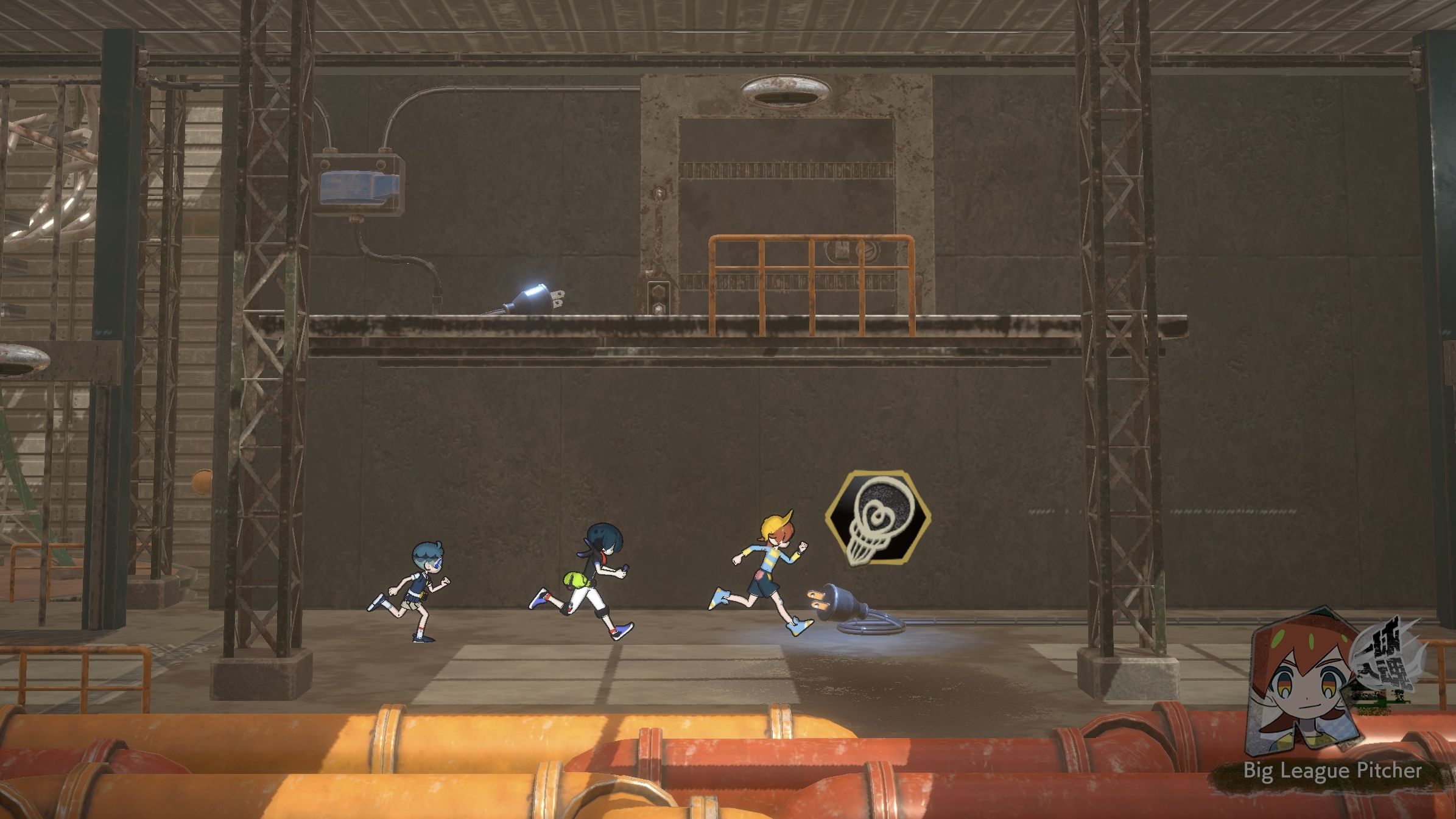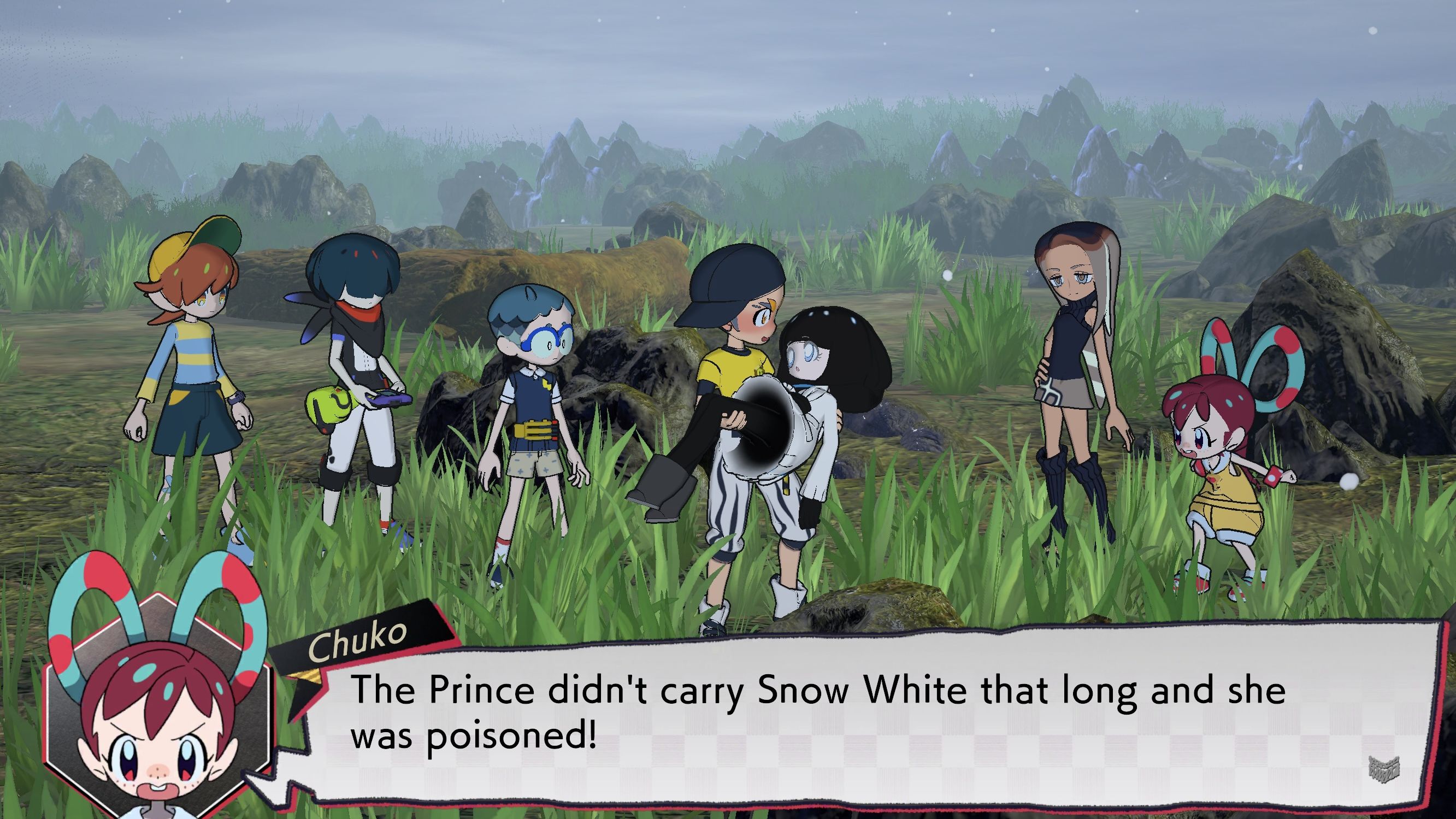World’s End Club was the first game the pair released since forming their own studio, Too Kyo Games, and can best be described as a bizarre but intriguing blend of platforming and death games, starring a cast of prepubescent children way too young to be fixing the world or dealing with cults. Think Danganronpa, if Danganronpa was a Saturday morning cartoon rather than a murder game filled with psychopaths. The game may initially feel familiar to fans of Kodaka’s famous franchise when the ‘Go-Getters Club’ - a group of 10 school friends led by Reycho and including the Osakaben-speaking Kansai, the air-headed Pai, and the joyful Vanilla - wake up in an underwater facility and are asked to play a Game of Fate, requiring they complete an unknown task to win. All losers will, naturally, die. Yet this familiar setup is a mere prologue, something quickly tossed aside through almost-corny acts of friendship so the game can evolve into a cross-country platforming adventure across Japan. As they try to return home The Go-Getters Club hope to find other survivors, and understand why their coming-of-age school trip resulted in the end of humanity. Placing kids in the lead role is usually either a blessing or a curse in games, giving us an all-new perspective on the world but potentially forcing us to endure the whining of immature children. In this case it works to the game’s benefit, using the Go-Getters’ innocent worldview to sugarcoat the darker moments, but without undercutting their severity. When the game subverts our expectations of a death game in favour of a travelog of hijinks and mystery-solving, it doesn’t feel unwelcome. We see the gang’s childish curiosity bring the excitement to the dour reality of mass extinction. Even as devastation is ever-present, this childishness coats it with a lighthearted, mysterious tone. Gameplay is split between platforming, story, and camping segments, the latter an excuse to see these children act their age, making jokes and laughing over the warmth of a campfire. You still wonder how the world came to such ultimate disrepair (especially as your journey provides more questions than answers regarding your circumstances), but rather than giving in to despair we instead get wrapped up in the moment. It’s almost serene. While we journey alone through Japanese cities reclaimed by nature, these abandoned cities feel like inviting playgrounds for the kids to explore. And explore they can, as 2D platforming segments are far more prominent here than the minor puzzle segments in previous games by Kodaka and Uchikoshi. Platforming is simplistic, but the journey between cities ensures environments feel unique, blended with the personality of their real-world equivalents. Character abilities also mix up the play (for example, the tiny-yet-tough Chuko spits fire when she stubbornly eats spicy Karamucho). There are flaws to be found in the somewhat railroaded conclusion, but above all else World’s End Club is an inviting adventure that examines the ideas these creators are known for through a more lighthearted lens. It’s a satisfying experience, with story and characters that grip you from beginning to end. I’d join the Go-Getters Club! Why don’t you do the same?

